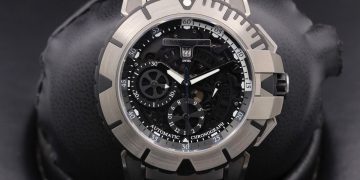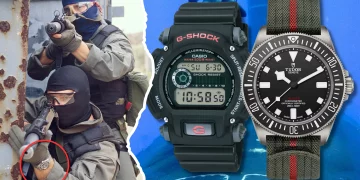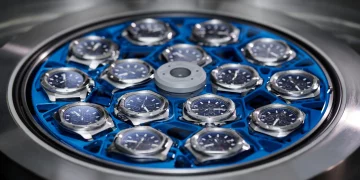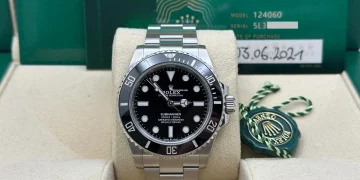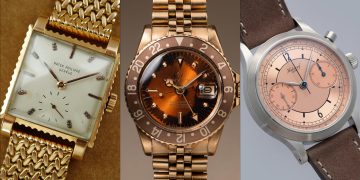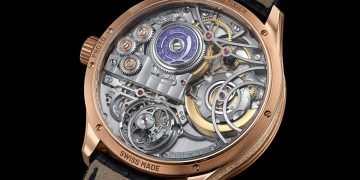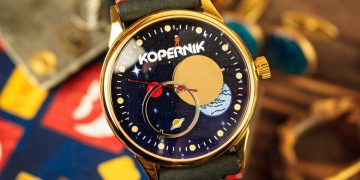When it comes to buying a luxury watch, performance is often the key differentiator between one brand and another. Watches are more than just tools for telling time; they represent craftsmanship, style, and precision. However, understanding the nuances between different brands’ performance can be complex. This guide breaks down the essential performance differences between the leading watch brands, helping you make an informed choice when selecting your next timepiece.
1. Understanding Watch Movements: The Heart of Performance
Movement refers to the mechanism that drives the timekeeping and any additional complications on a watch. Understanding the different types of movements will directly influence your choice.
Automatic Movements
These are self-winding and powered by the motion of your wrist. Popular luxury brands like Rolex and Omega use automatic movements extensively. They offer high accuracy and a continuous power supply as long as you wear the watch regularly.
- Rolex: Known for their Caliber 3135, which powers popular models like the Submariner and Datejust. These movements are built for longevity and require minimal servicing.
- Omega: Their Co-Axial Escapement (found in models like the Seamaster and Speedmaster) offers better stability, requiring fewer adjustments over time and reducing wear and tear.
Manual Movements
Manual watches require winding to operate and are typically favored by collectors who appreciate traditional craftsmanship. Brands like Patek Philippe and A. Lange & Söhne specialize in highly detailed manual calibers.
- Patek Philippe: Their Caliber 29-535 PS is a masterpiece that powers the Calatrava and Aquanaut series, offering superb precision and minimal time deviation.
Quartz Movements
Quartz watches are battery-powered and are often more affordable, with superior timekeeping accuracy compared to automatic or manual watches. However, they lack the traditional watchmaking appeal that many luxury brands offer. Tag Heuer and Seiko are prominent in quartz technology.
- Tag Heuer: Known for their Quartz chronographs, which are ideal for those who value precision without the need for mechanical movements.
2. Materials and Construction: Impact on Performance and Durability
The materials used in a watch greatly affect its weight, durability, and aesthetic appeal. Luxury brands invest heavily in materials that not only enhance a watch’s visual appeal but also its long-term performance.
Stainless Steel
The most common material for watch cases due to its strength and resistance to corrosion. Brands like Rolex and Omega use 904L stainless steel, which is more resistant to rust than the typical 316L steel used in other watches.
- Rolex: Their use of 904L steel gives watches like the Rolex Submariner better corrosion resistance, ensuring they perform well in harsh conditions.
Titanium
Known for being lightweight yet highly durable, titanium is increasingly used by brands like IWC and Breitling. Titanium watches are excellent for those who prioritize comfort without sacrificing toughness.
- Breitling: Their Avenger Seawolf collection features titanium cases that offer a high strength-to-weight ratio, providing a comfortable yet sturdy timepiece.
Ceramic
Ceramic is scratch-resistant and offers a sleek, modern aesthetic. Omega and Rado are pioneers in this area. It’s lightweight, resists scratches, and is hypoallergenic.
- Rado: Known for Ceramica watches, which are made of high-tech ceramic, providing a luxurious look with unparalleled durability.
Precious Metals (Gold, Platinum)
Brands like Patek Philippe and Audemars Piguet often use 18k gold, platinum, and other precious metals for their premium collections. These materials provide both aesthetic value and timeless durability.
3. Water Resistance and Durability: Performance in Extreme Conditions
If you lead an active lifestyle or plan to wear your watch in challenging environments, water resistance and overall durability should be top priorities.
Water Resistance
The water resistance of a watch is measured in meters or atmospheres (ATM). Watches with higher water resistance are typically built with a tight-sealing case and screw-down crowns.
- Rolex Submariner: With a 300-meter water resistance, this iconic diver’s watch is ideal for both professional divers and casual wearers who appreciate reliable performance underwater.
- Omega Seamaster 300M: This watch offers 600 meters of water resistance, designed for those who spend extended time underwater.
Shock Resistance
Certain brands, like Casio (with their G-Shock line), focus heavily on shock resistance, catering to individuals who require rugged durability without sacrificing timekeeping accuracy.
- Casio G-Shock: Built for extreme conditions, offering unparalleled shock resistance and vibration protection.
4. Power Reserve: Understanding How Long a Watch Keeps Running
Power reserve refers to the amount of time a watch will run after being fully wound. This is especially important for mechanical watches.
Long Power Reserve
For those who prefer not to wind their watches every day, a long power reserve is ideal. Audemars Piguet and Vacheron Constantin offer models with up to 7 days of power reserve.
- Audemars Piguet: The Royal Oak Offshore features a 5-day power reserve, ideal for someone looking for both precision and minimal maintenance.
Standard Power Reserve
For everyday wear, most automatic watches offer a 40-70 hour power reserve, sufficient for weekend use without the need for winding every day.
- Rolex Submariner: Offers 48 hours of power reserve, sufficient for most users who wear their watch regularly.

5. Watch Design: Comfort and Functionality
The design of a watch influences both comfort and usability. A well-designed watch will be easy to read, comfortable to wear, and versatile enough to suit various occasions.
Dial Layout
Many high-end brands focus on legibility and simplicity in their designs. Watches like the Rolex Datejust and Jaeger-LeCoultre Master Control are known for their clear dials and easily readable markers.
- Jaeger-LeCoultre Master Ultra Thin: The minimalist design ensures maximum legibility without sacrificing elegance.
Bracelet and Strap Comfort
A good bracelet or strap can make or break the comfort of a watch. Brands like Omega and Patek Philippe offer high-quality metal bracelets or premium leather straps.
- Omega: Their Seamaster 300M comes with a bracelet designed for comfort, with adjustable links to accommodate different wrist sizes.
6. Choosing the Right Brand Based on Your Preferences
Finally, when selecting a watch, you must weigh the specific needs of your lifestyle with the performance advantages of each brand.
- Rolex: Ideal for those looking for reliable, long-lasting performance, with classic designs and robust construction.
- Omega: Great for those who want a balance between technical innovation, design, and sports functionality.
- Patek Philippe: Best suited for collectors and individuals seeking exceptional craftsmanship and high-complication movements.
- Audemars Piguet: Perfect for those who desire bold, contemporary designs with a focus on exclusive craftsmanship.
Conclusion
Choosing the right watch involves understanding the performance differences between various luxury brands. Whether you prioritize movement accuracy, material durability, water resistance, or aesthetic appeal, each brand offers unique advantages. By considering your personal needs, you can find a timepiece that aligns with your lifestyle and expectations. Ultimately, the right watch isn’t just a piece of luxury – it’s a reflection of your personal style and appreciation for craftsmanship.



